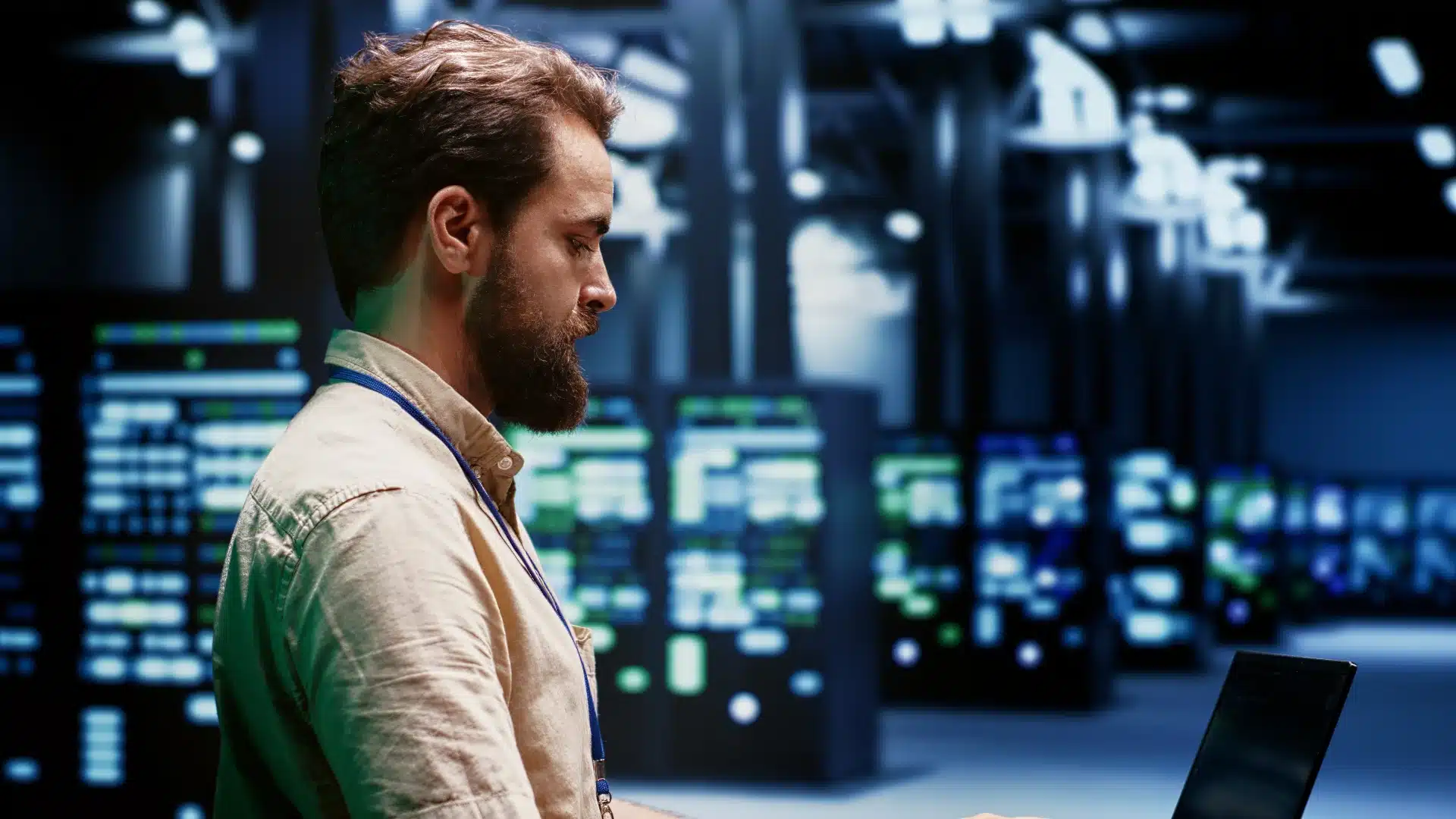The line between work and personal life has blurred significantly, with digital technologies enabling—and sometimes demanding—constant connection. This article explores why managing our impulses to constantly check devices, respond immediately, and be all things to all people isn’t just beneficial but essential for sustainable leadership, organisational success, and personal wellbeing.
The Modern Leadership Paradox
As leaders in UK businesses, we pride ourselves on dedication, availability, and responsiveness. These qualities have traditionally been hallmarks of effective leadership. However, research increasingly suggests that our 24/7 connectivity culture may be undermining the very qualities that make us effective.
The digital workplace has transformed how we operate, but it has also introduced what researchers call “the dark side of digital working”—including technostress, overload anxiety, and addiction [ref:3]. These elements don’t just affect us personally; they ripple through our organisations, influencing culture, productivity, and employee wellbeing.
The Neuroscience of Digital Distraction
To understand why managing our digital impulses is so critical, we must first examine what happens to our brains when we operate in a state of constant connectivity.
The Myth of Multitasking
Research from the University of Michigan demonstrates that multitasking, which many leaders pride themselves on, reduces productivity by more than 40% due to the cognitive cost of switching between tasks [ref:5]. What we perceive as multitasking is actually what researchers more accurately describe as “simultaneous inattention”—dividing our focus so thinly that we’re not fully present for any single task.
Recent studies show that our attention spans on screens have dramatically decreased from approximately 2.5 minutes twenty years ago to a mere 47 seconds today [ref:8]. This striking reduction means we’re potentially operating in a perpetual state of distraction, never allowing our minds to engage deeply with complex problems—precisely what leadership roles require.
The Interruption Economy
Dr. Gloria Mark at the University of California at Irvine has found that we now shift between work spheres every 45 seconds, compared to every three minutes a decade ago [ref:5]. More alarmingly, it takes an average of 25 minutes to return to the original task after an interruption. This creates a mathematics of distraction that simply doesn’t add up: if we’re interrupted every few minutes but require 25 minutes to refocus, when are we ever truly focused?
Digital interruptions have become so normalised that many leaders don’t recognise the toll they take. A 2019 RescueTime study found that the average worker is interrupted or switches tasks every six minutes, resulting in just 2 hours and 48 minutes of productive work daily [ref:2]. For business leaders with complex decision-making responsibilities, this fragmentation of attention can be particularly costly.
The Physical and Mental Health Implications
Constant digital connectivity doesn’t merely affect productivity; it fundamentally alters our physiological and psychological states.
Stress and Recovery Pathways
Neuroscience research demonstrates that our brains require periods of both activity and rest to function optimally. The constant state of alertness created by digital connectivity triggers stress responses that, when chronic, can lead to serious health consequences.
Studies show that frequent interruptions significantly increase stress and frustration, which doubles error rates and heightens fatigue and anxiety levels among workers [ref:2]. For leaders, who must maintain composure and clarity of thought even in high-pressure situations, this stress response can undermine critical decision-making abilities.
The Importance of Cognitive Recovery
Just as athletes understand the necessity of recovery periods between training sessions, our cognitive systems require downtime to consolidate information, make connections between ideas, and replenish mental resources. Research in neuroscience demonstrates that alternating between periods of focused work and genuine disconnection optimises brain function [ref:11,13].
This alternating pattern isn’t merely beneficial—it’s essential for cognitive performance. Studies on workaholic tendencies reveal that those who struggle to disconnect from work experience lower overall mood, not just during leisure time but even whilst working [ref:21]. This suggests that our inability to disconnect may be undermining our effectiveness even when we believe we’re being productive.
The Workaholism Epidemic
The UK has a particular challenge with work addiction and overcommitment. Research indicates that workaholism—defined as a stable tendency towards excessive and compulsive working—has significant negative consequences that extend beyond the individual to affect teams and entire organisations [ref:23].
Defining Workaholism
Work addiction is characterised not simply by long hours but by a compulsive relationship with work that includes:
- An inability to regulate work habits
- Working beyond what is reasonably expected
- Working to the point of neglecting other life activities
- Continuing despite negative consequences
- Experiencing withdrawal symptoms when not working
Studies show that workaholism is related to impaired health and wellbeing as well as conflicts between work and family life [ref:23]. Contrary to popular belief, workaholics often experience lower productivity and make more errors than their non-workaholic counterparts due to exhaustion and diminished cognitive resources.
The Organisational Impact
The culture leaders create around connectivity and availability doesn’t just affect them personally; it establishes norms that permeate the entire organisation. Research has found that 77% of employees and 71% of managers experience significant distractions and stress from digital notifications and tools [ref:2]. When leaders model constant connectivity, they implicitly endorse this as the expected standard.
The Science of Disconnection
The good news is that research also points to effective strategies for managing our digital impulses and creating healthier work patterns.
The Power of Deliberate Rest
Neuroscience research supports the value of complete disconnection from work during evenings, weekends, and holidays. “Empirical research has shown that employees who experience more detachment from work during off-hours are more satisfied with their lives and experience fewer symptoms of psychological strain” [ref:13].
Studies on recovery activities during short breaks demonstrate that they effectively prevent the impairing effects of accumulated strain [ref:11]. Even micro-breaks (brief respites during the workday) show measurable benefits for wellbeing and subsequent performance.
The Benefits of Alternating Pace
The human brain functions optimally when it alternates between periods of focused attention and relaxation. Research in neuroscience demonstrates that this oscillation between activity and recovery is not just beneficial but essential for optimal cognitive performance.
When we engage in activities that are completely different from work—particularly those involving natural environments, physical movement, or social connection—our brains experience a restorative effect that enhances creativity, problem-solving abilities, and emotional regulation [ref:13,17].
Practical Strategies for Business Leaders
Based on the neuroscientific evidence, here are actionable approaches for leaders seeking to manage digital impulses and create healthier work patterns:
1. Implement Digital Boundaries
- Establish clear expectations about email response times within your organisation
- Create an “Interruption Norms Rulebook” that defines when immediate responses are truly necessary
- Model these boundaries by not sending emails during evenings or weekends
- Utilise “out of office” messages that genuinely protect your disconnected time
2. Practice Strategic Unavailability
- Schedule specific “deep work” sessions where you are completely inaccessible
- Communicate these boundaries clearly to your team
- Designate someone to handle genuine emergencies during your unavailable periods
- Remember that your accessibility should be strategic, not constant
3. Embrace Proper Holidays
Research shows that complete disconnection during holiday periods is essential for cognitive recovery. However, many leaders fail to truly disconnect when away from the office.
- Delegate authority clearly before departing
- Set up comprehensive handover processes
- Communicate that you will not be checking messages
- Resist the temptation to “just check in quickly”
Studies on jet lag and recovery demonstrate that our brains require genuine breaks from work-related thinking to restore optimal function [ref:16]. A proper holiday means mental, not just physical, absence from work concerns.
4. Optimise Your Cognitive Rhythms
Research into human attention shows that we naturally operate in cycles of approximately 90 minutes of focused attention followed by periods of lower alertness [ref:17]. Rather than fighting these natural rhythms, structure your work accordingly:
- Schedule your most complex, creative work during your peak cognitive hours
- Use lower-energy periods for administrative tasks
- Take brief but complete breaks between focused work sessions
- Incorporate physical movement throughout your day
5. Create Technology-Free Zones
Designate specific places and times where technology is completely absent:
- Technology-free dining areas
- Bedrooms without devices
- Morning routines without immediate digital input
- Meeting spaces without devices (when appropriate)
These zones create mental spaces where your brain can function without the constant pull of digital distractions.
Leading Cultural Change
As business leaders, our responsibility extends beyond managing our own digital habits. We have the power—and the responsibility—to shape organisational cultures that support sustainable productivity.
Modelling Healthy Boundaries
Research shows that employee behaviour is significantly influenced by leadership example. When leaders demonstrate healthy boundaries around digital connectivity, they give implicit permission for others to do the same [ref:2].
- Make it clear when you are not available
- Avoid sending emails during evenings and weekends
- Speak openly about your disconnection strategies
- Celebrate the benefits you experience from proper breaks
Creating Organisational Policies
Effective notification management requires clear communication and policy changes. Some organisations have implemented formal “Right to Disconnect” policies, which establish expectations around after-hours communications [ref:2].
Consider implementing:
- Email curfews during evenings and weekends
- Clear guidelines about response time expectations
- Rotation systems for urgent matters outside of work hours
- Regular digital detox initiatives
Measuring What Matters
Many organisations inadvertently reward constant availability rather than meaningful output. By shifting metrics to focus on results rather than responsiveness or hours worked, leaders can create cultures that value effectiveness over the appearance of dedication.
- Review how performance is evaluated in your organisation
- Ensure that quality of output is prioritised over quantity of hours
- Create recognition systems that celebrate efficiency, not just effort
- Discuss work-life balance in performance reviews
The Competitive Advantage of Disconnection
Far from being a luxury or indulgence, strategic disconnection provides a genuine competitive advantage in today’s business environment. Research demonstrates that organisations with cultures that support proper recovery experience:
- Reduced burnout and turnover
- Enhanced creativity and innovation
- Higher quality decision-making
- Improved employee engagement and satisfaction
A study by Intel estimated the cost of lost productivity due to email overload at $1 billion per year for a company with 50,000 workers [ref:5]. This figure doesn’t include the broader costs of stress-related illness, reduced creativity, and diminished decision quality.
The Neuroscience of Connection
Interestingly, while managing digital connectivity is crucial, human connection remains vital for cognitive and emotional wellbeing. Research shows that when people converse or share an experience, their brain waves actually synchronise [ref:19]. This neural resonance facilitates understanding, empathy, and collaborative problem-solving—precisely the qualities needed for effective leadership.
The challenge for modern leaders is to disconnect from digital distractions whilst remaining genuinely connected to the humans around them. This requires intentional practices that prioritise high-quality, present-focused interactions over constant, low-quality digital exchanges.
Beyond Individual Change: Systemic Solutions
While individual strategies are important, addressing the deeper issues of digital overwhelm requires systemic approaches. As business leaders, we can advocate for:
- Organisational cultures that value recovery and disconnection
- Technology designed to support human wellbeing rather than constant engagement
- Public policies that protect employees’ right to disconnect
- Educational initiatives that teach digital literacy and boundary-setting
Co-author Cristian Balducci provides some advice to organisations on addressing workaholism: “Organisations must send clear signals to workers on this issue and avoid encouraging a climate where working outside working hours and at weekends is considered the norm. On the contrary, it is necessary to foster an environment that discourages excessive and dysfunctional investment in work, promoting disconnection policies, specific training activities and counselling interventions” [ref:21].
Conclusion: The Leadership Imperative
As business leaders, we have both the opportunity and the responsibility to redefine success in the digital age. This means moving beyond outdated notions of constant availability as a marker of dedication, and embracing a more sophisticated understanding of human cognitive function and organisational effectiveness.
The research is clear: our impulse to remain constantly connected undermines the very qualities that make us effective leaders—focused attention, creative thinking, emotional regulation, and sound judgment. By embracing the science of disconnection and implementing practical strategies to manage our digital impulses, we can enhance our own effectiveness whilst creating cultures that support sustainable high performance.
In a world that increasingly demands our attention from every direction, perhaps the most valuable skill we can develop is the ability to intentionally disconnect—to be selective about where we direct our finite cognitive resources. This isn’t about working less; it’s about working smarter, with greater intention and effectiveness.
The truly transformative leaders of the coming decade will be those who master not just digital connectivity, but strategic disconnection—creating spaces for deep thought, genuine recovery, and human connection. In doing so, they will unlock new levels of innovation, wellbeing, and sustainable success for themselves and their organisations.
Are you ready to lead this change?
References
Andreassen, C.S. (2013). Workaholism: An overview and current status of the research. Journal of Occupational Health Psychology, 18(1), 3-16.
Brett, J.M., & Stroh, L.K. (2003). Working 61 plus hours a week: Why do managers do it? Journal of Applied Psychology, 88, 67–78.
Caldwell, J.A., et al. (2019). Fatigue and its management in the workplace. Neuroscience & Biobehavioral Reviews, 96, 272-289.
Fassel, D. (1992). Working ourselves to death: The high cost of workaholism and the rewards of recovery. London: Thorsons.
Griffiths, M. (2005). Workaholism is still a useful construct. Addiction Research and Theory, 13, 97–100.
Mark, G., & Ganzach, Y. (2014). Workload and procrastination: The roles of psychological detachment and fatigue. Journal of Organizational Behavior, 35(1), 93-105.
Mark, G., Gudith, D., & Klocke, U. (2008). The cost of interrupted work: More speed and stress. Proceedings of the SIGCHI Conference on Human Factors in Computing Systems, 107-110.
Marsh, E., et al. (2022). The digital workplace and its dark side: An integrative review. Computers in Human Behavior, 126, 106991.
Ng, T.W.H., Sorensen, K.L., & Feldman, D.C. (2007). Dimensions, antecedents, and consequences of workaholism: A conceptual integration and extension. Journal of Organizational Behavior, 28, 111–136.
Sussman, S. (2012). Workaholism: A review. Journal of Addiction Research & Therapy, 6(1), 4120.
Widyanto, L., & Griffiths, M. (2006). Internet addiction: A critical review. International Journal of Mental Health and Addiction, 4, 31–51.










